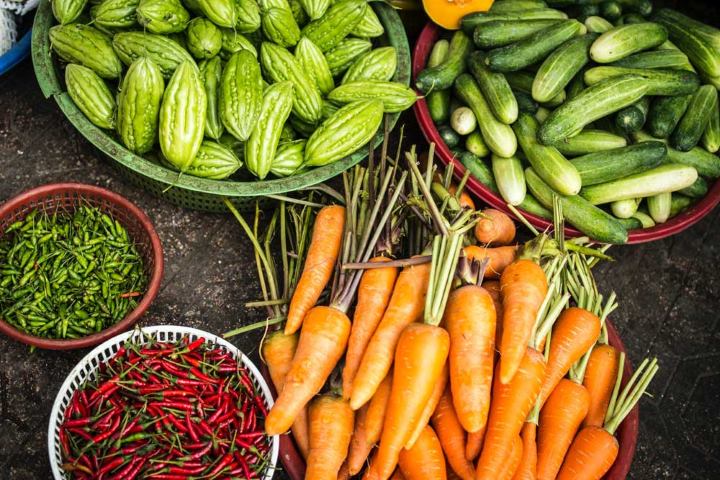The title “GAPS” means “gut and psychology syndrome.” The GAPS diet follows the idea that your digestive health is linked with your overall physical and mental health. The idea of the GAPS diet is that people avoid foods that are difficult to digest and that might damage the gut flora or gut lining. They replace them with nutrient-rich foods that help your gut heal. This six-phase diet eliminates grains, starchy vegetables, sugar, and refined carbohydrates and is supposed to ease digestion.
In This Article:
- What do I do for the Introduction Phase?
- What do I do for the Maintenance Phase?
- What do I do for the Reintroduction Phase?
- Are there GAPS Supplements I can take?
- Does it work and is it Effective?
- What Foods Should I avoid?
- What are the Risks Associated with it?
Everything You Need to Know about GAPS Diet
What do I do for the Introduction Phase?
When starting your GAPS diet, it’s recommended to start with a GAPS intro diet, which is divided into six stages. Foods are slowly re-introduced over a time period of 3–6 weeks.
As you enter each new stage, be sure to introduce just one new food at a time to monitor your tolerance and how your body reacts to this food. If you find that your body reacts badly to a certain food, you may want to hold off on adding that food back into your diet for some time.
Stage 1
In stage 1, your diet should consist of:
- homemade bone broth
- boiled meat/fish
- well-cooked vegetables
- Probiotics through fermented vegetable juices, yogurt, and homemade fermented whey
- ginger or chamomile tea with raw honey
- purified water
Stage 2
In stage 2, add the following:
- raw, organic egg yolks
- casseroles made with meats and vegetables
- homemade ghee
Stage 3
In stage 3, add the following:
- avocados
- fermented vegetables
- GAPS pancakes
- scrambled eggs made with ghee, goose or duck fat
- probiotic supplements
Stage 4
In stage 4, add the following:
- roasted or grilled meats
- cold-pressed olive oil
- freshly pressed carrot juice
- GAPS milkshake
- GAPS bread
Stage 5
In stage 5, add the following:
Stage 6
In stage 6, add the following:
- Raw and peeled apples
- raw fruits
- increase your honey intake
- baked goods sweetened with dried fruit
After completing the introduction diet, many people move onto the complete GAPS diet.
What do I do for the Maintenance Phase?
During the GAPS diet, it is instructed to avoid all grains, sugars, starchy vegetables, refined carbohydrates, and processed foods. This stage lasts 1.5–2 years.
Agreeable GAPS foods involve:
- meat, fish, and shellfish (fresh or frozen only)
- fresh vegetables and fruit
- garlic
- natural fats, such as olive oil, coconut oil, and ghee
- a moderate amount of nuts
- GAPS baked goods made using nut flours
The GAPS diet also recommends that people:
- Consume organic food as often as possible
- Avoid all processed and packaged foods
- Eat fermented food with every meal
- Drink bone broth with every meal
- Avoid eating fruit with meals
- Combine all protein-rich food with vegetables, which will keep body acidity levels normal
What do I do for the Reintroduction Phase?
After at least 6 months of normal digestion, people can choose to move on to the reintroduction phase. The last stage of the GAPS diet involves gradually reintroducing food items over the course of several months or a year.
The diet recommends starting with starchy foods like potatoes and fermented grains. Start with small portions and gradually increase the amount of food, as long as no digestive issues arise. Continue this process with starchy vegetables, grains, and beans. However, after completing the GAPS diet, many people continue to avoid refined and highly processed foods.
Are there GAPS Supplements I can take?
The GAPS protocol also requires you to take various supplements. These include probiotics, essential fatty acids, digestive enzymes, and cod liver oil. It is prescribed that you take probiotics to restore the balance of beneficial bacteria in the gut.
Does it work and is it Effective?
There is limited research on the stated benefits of the GAPS diet itself and, although it’s clear that gut health plays a major role in many aspects of health, it’s unclear just how extensive the benefits of this may be. Despite the lack of research on the diet, there are quite a few existing studies that look at many of its individual components and demonstrating that this diet may come with a large host of health benefits.
What Foods Should I avoid?
Foods to avoid when you’re on the GAPS diet include:
- Sugar and artificial sweeteners
- Syrups
- Alcohol but adults can have a glass of dry wine occasionally
- Processed, canned and packaged foods (such as fried foods)
- Grains such as rice, corn, wheat, and oats
- starchy vegetables, such as potatoes and yams
- Milk
- All beans, except white and greens beans
- Coffee and strong teas
- Soy
What are the Risks Associated with it?
The GAPS diet is a very restrictive diet that requires you to cut out many nutritious foods for long periods of time. It also provides little to no guidance on how to ensure your diet contains all the nutrients you need.
Due to this, the most obvious risk of going on this diet is malnutrition. This is especially true for children who are growing and need a lot of nutrients since the diet is very restrictive.
There is also the concern that consuming such large amounts of bone broth could increase your intake of lead, which is toxic in high doses.
Sources
https://www.healthline.com/nutrition/gaps-diet
